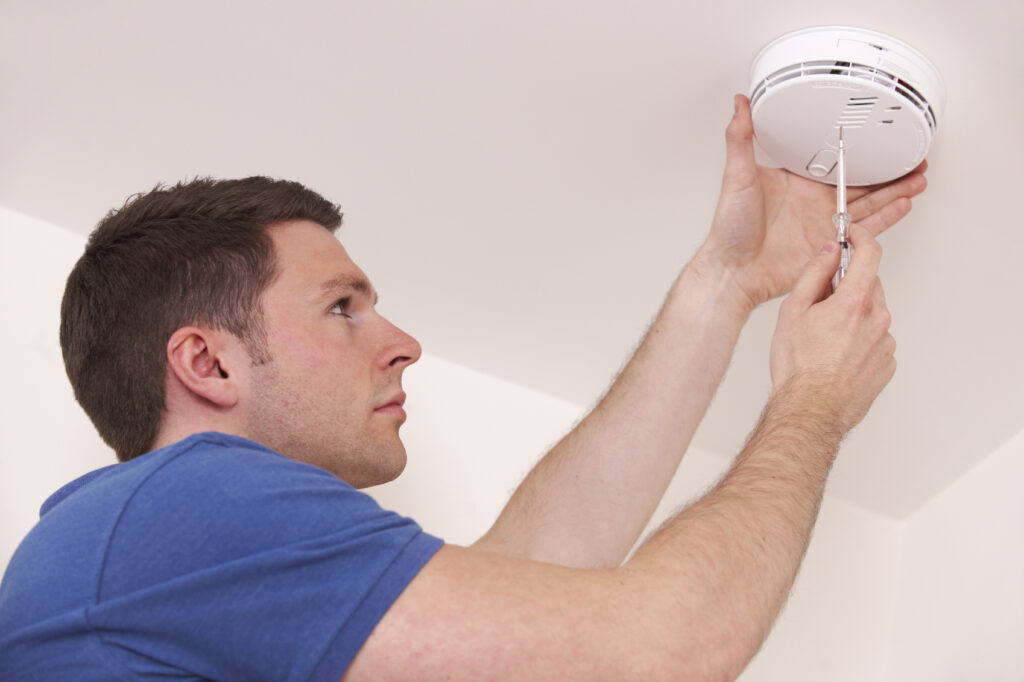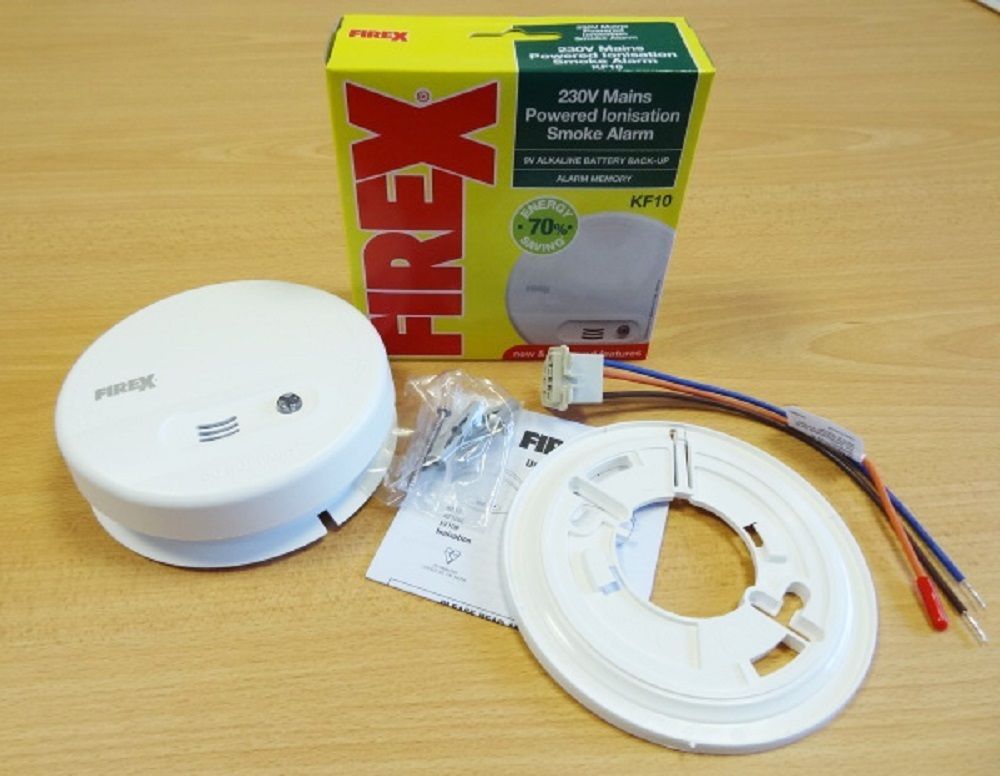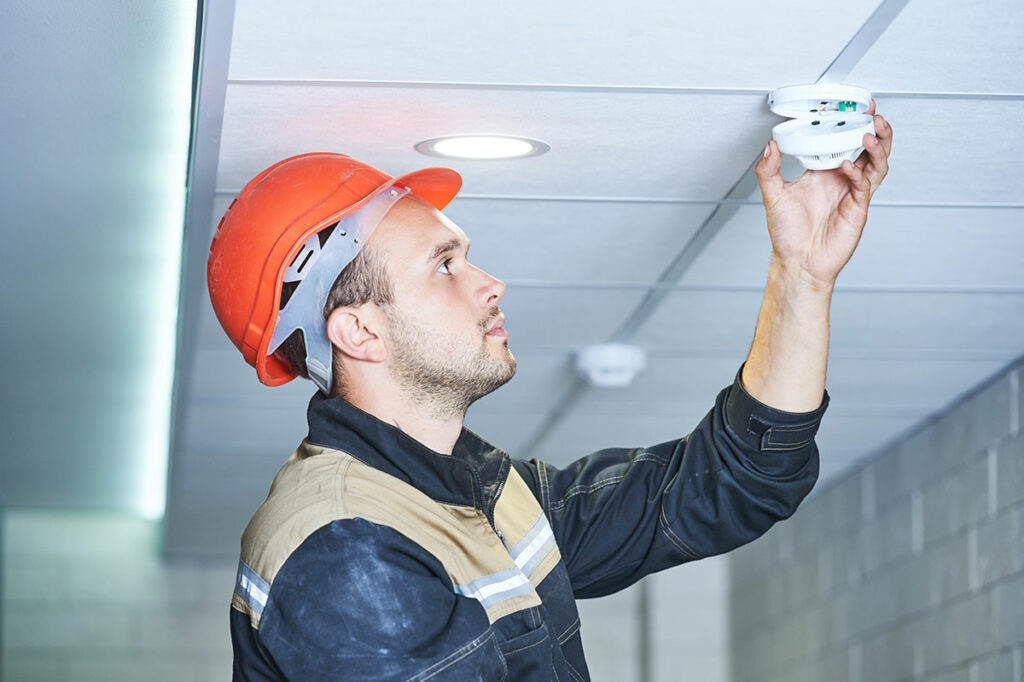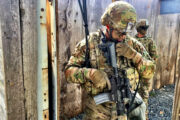Many homeowners invest in home security alarm systems to keep their homes safe and secure. A fully-function smoke detector system should also be at the top of the homeowners’ safety checklist. Every year, millions of dollars of damage are caused by fire and this damage isn’t just restricted to properties. The risk of smoke inhalation (which is often less apparent but just as dangerous) can cause serious harm to people.
How Effective Are Smoke Detectors?
Smoke detectors are one of the best and most affordable ways to provide early warning when a fire begins. When properly installed and maintained, fire alarms can help prevent injuries and minimize property damage. According to research, about 70% of home fire deaths occur in homes with no smoke alarms or no working smoke alarms. However, the effectiveness of smoke alarms can depend on which one you choose, as different types are better at detecting certain fires.

What Is the Best Kind of Smoke Alarm?
There are two types of smoke alarms: ionisation and photoelectric. For optimal protection experts advise homeowners to get both ionising and photoelectric smoke detectors for their homes.
Ionisation
These are the most affordable kind of smoke alarms; they produce a small current that is affected by smoke, triggering the alarm. Ionization smoke alarms are sensitive to the tiny particles of smoke commonly produced by fast flaming fires, which start when flammable material like wood or paper quickly catches. The downside of this smoke alarm is it easily set off by burnt toast, so it isn’t ideal for the kitchen. Places to install ionization smoke alarms include the dining room, loft or lounge for protection against accidental fires caused by candles, matches or Christmas lights.
Photoelectric
This type of smoke alarm is slightly more expensive and produce a beam of light that triggers the alarm when affected by smoke. More effective at detecting large smoke particles produced by smouldering fires, photoelectric smoke alarms are a better option against fires caused by PVC wiring, chargers or cigarettes. On the other hand, this detector type is less sensitive to smoke from free-burning fires.
Photoelectric smoke alarms are best placed next to kitchens, in landings and hallways and in bedrooms. Keep in mind that having fire alarms in the bedroom is particularly important for children and the elderly who are less likely to wake up when alarms sound.

What About Heat Sensors?
While heat sensors are not strictly smoke alarms, they can also be useful as they detect a rapid rise in temperature. This makes them an excellent option for the kitchen, where fat fires can rapidly burn, and as they don’t detect smoke, they are not susceptible to false alarms. Heart alarms are also a great option for smokers who don’t want to set off alarms in the lounge and for rooms with open fires.
In addition to type, it’s important to consider extra functions and installation methods. Mains powered alarms are a great way to ensure your alarm system doesn’t need regular battery changes, but they must be installed by a qualified electrician. It’s also a great idea to consider a backup battery in case of power cuts. Some smoke alarms include carbon monoxide alarms to detect harmful leaks from heating systems and other gas appliances.
Many wonder if are lithium battery fire detectors safe? Well, if you follow a strict battery replacement schedule they might be fine. The problem with these batteries is they maintain a high voltage until the end of their usable life, which means they provide a much shorter “low battery” warning to let you know that is time to put in a new battery. Alkaline batteries, on the other hand, have a voltage drop-off that is more gradual, which prolongs the “low battery” alert and greatly increase the odds that you’ll be nearby to get the alert.
Where to Position Smoke Detectors?

When ceiling mounted, smoke alarms should be mounted in the middle of the ceiling. If that is not possible, mount the alarms on the wall at least one metre away from a corner and within 30 centimetres from the ceiling. Make sure to keep smoke alarms away from drafts created by fans or air ducts because the moving air can blow the smoke away from the sensor on the alarm.
Also, avoid placing fire alarms too close to the bathroom shower and kitchen stove, as shower steam and cooking smoke can cause nuisance alarms. If you do install a smoke alarm in the kitchen, ensure it’s at least 3 metres away from any cooking appliances to help avoid false alarms.
It’s recommended to test your smoke alarms at least once a month to ensure they’re working and replace the batteries every 6 months or if a low battery chirp occurs. Smoke alarms should also be replaced every 10 years. If the smoke alarm is sounding, don’t ignore it – there is a reason for that. Create a safety escape plan and discuss and practice it with your family so everyone is able to escape in the case of a fire.


